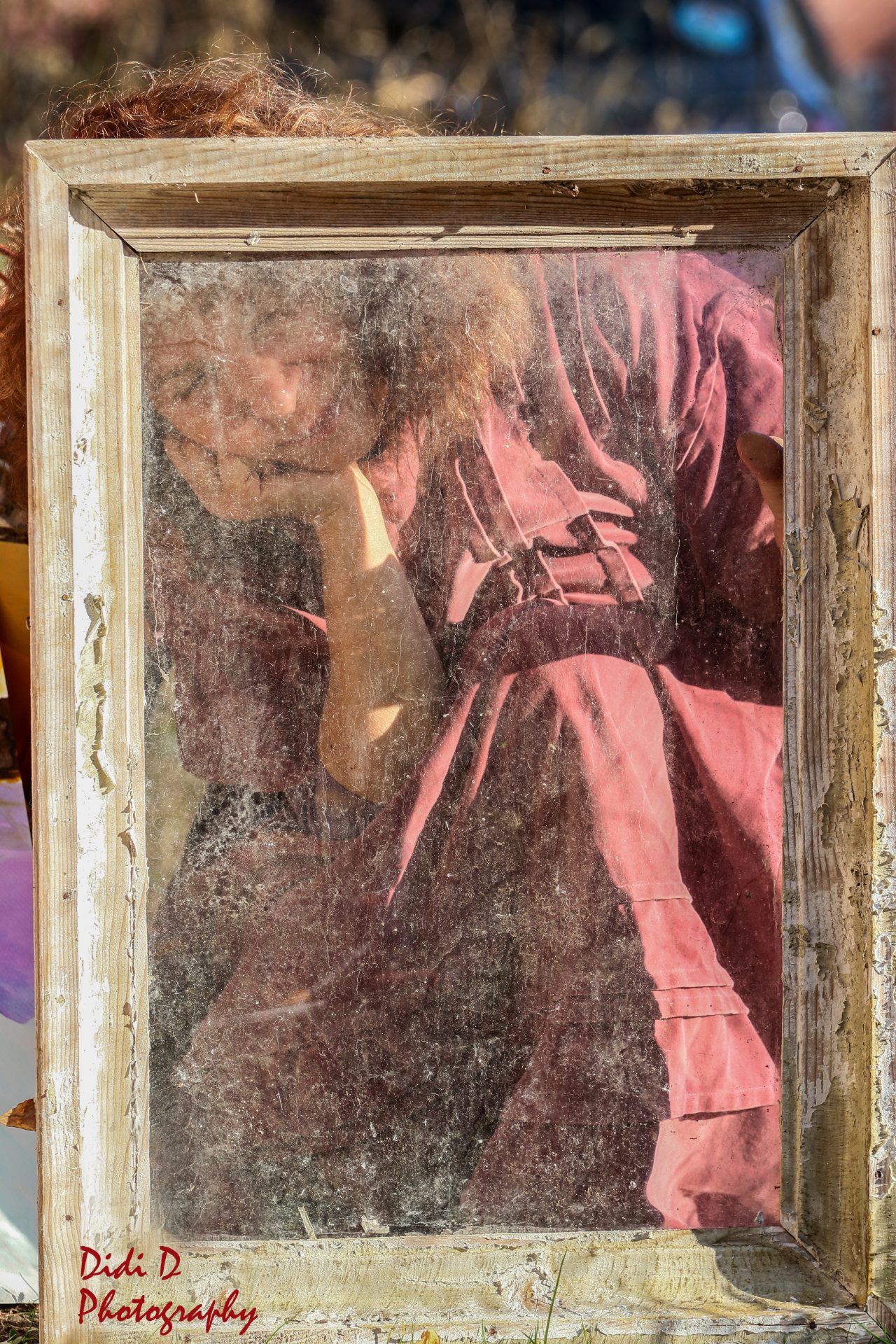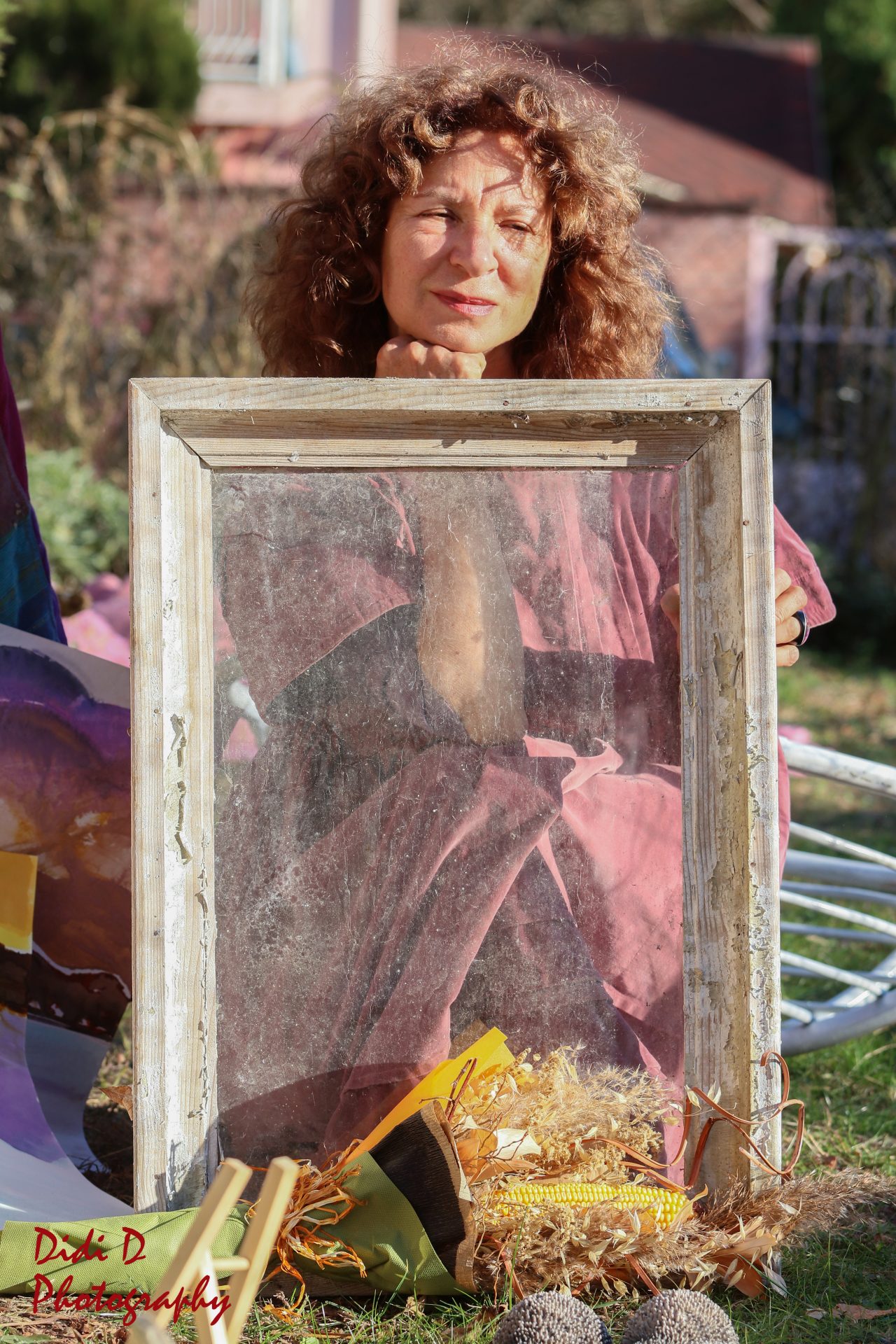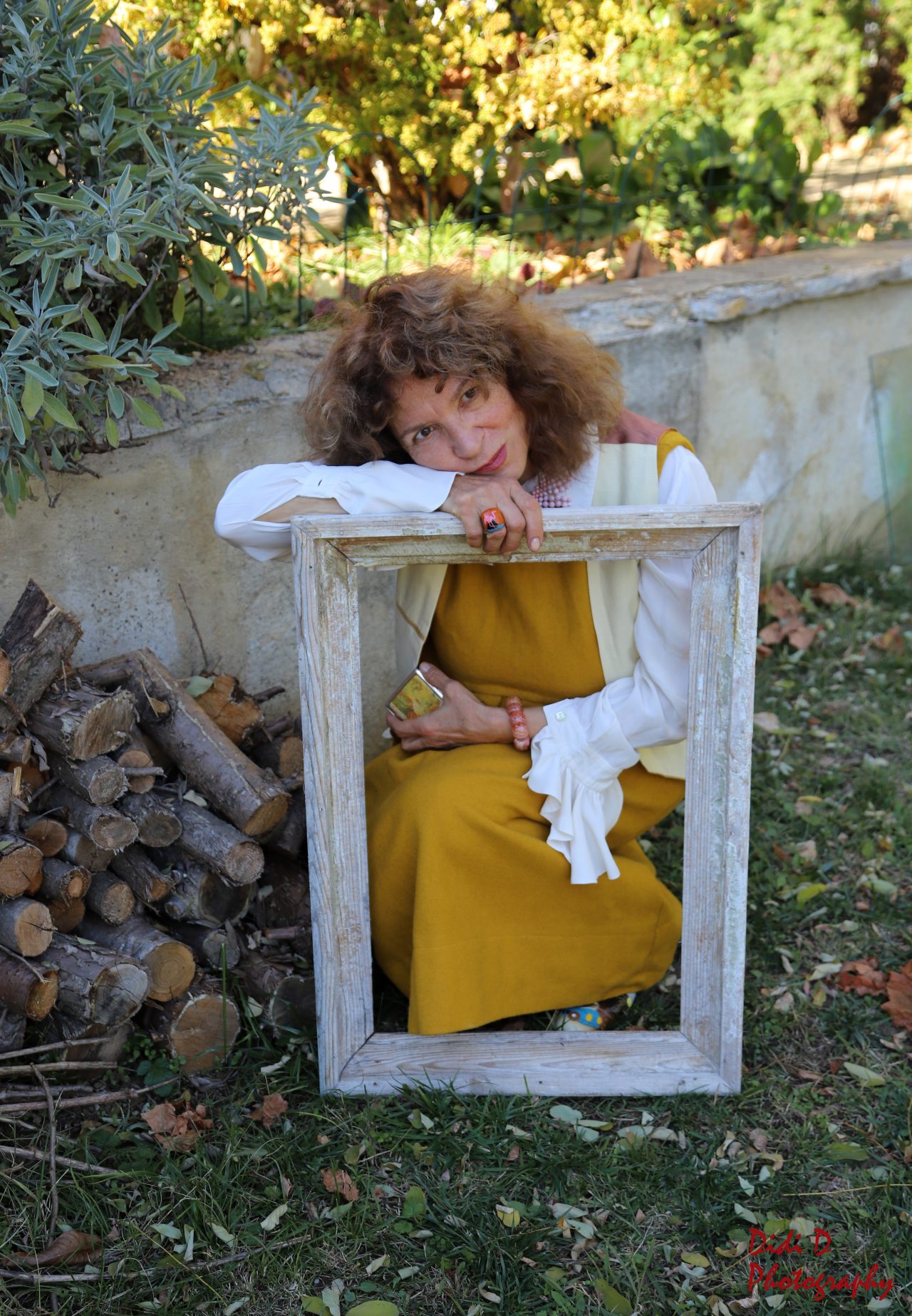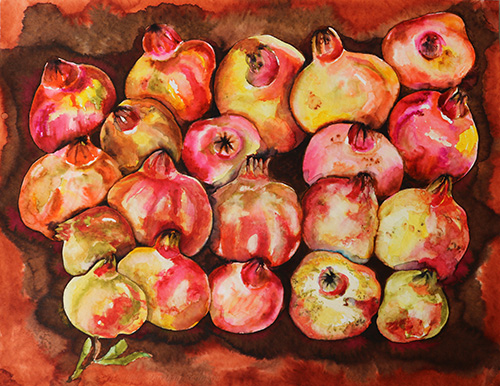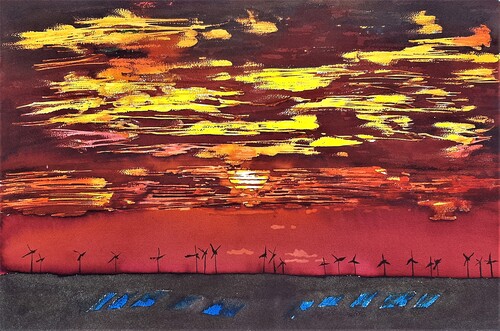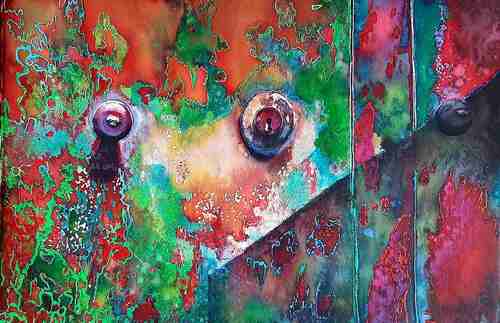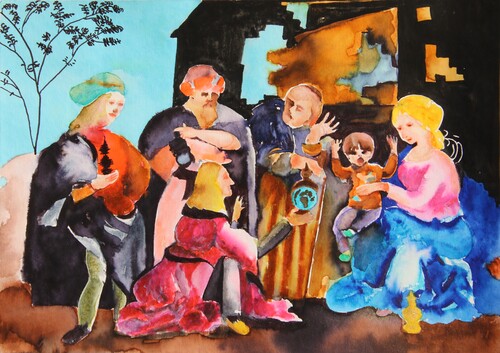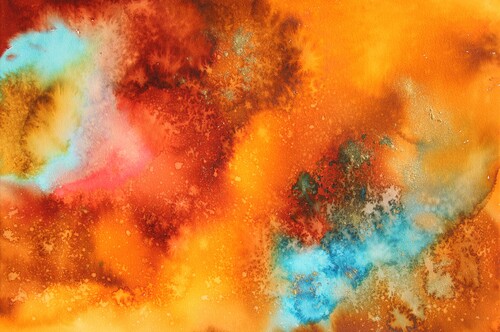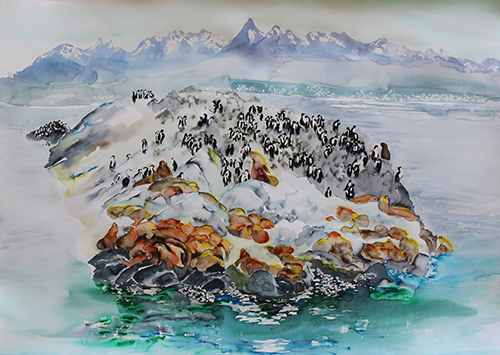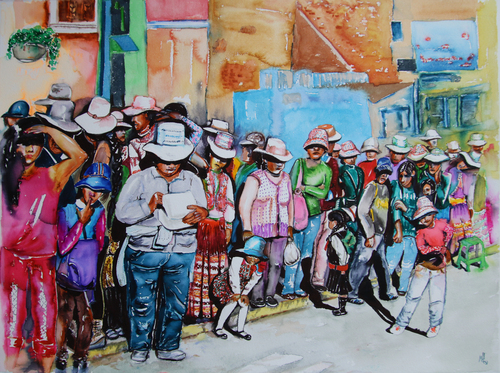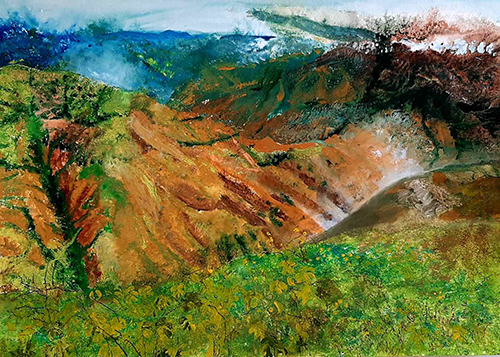Or in a frame. What is it about? For art or for nature? Can nature be confined within a framework? Or does it stay in front of the frame? Depends on the viewpoint. Art/nature is everywhere. In front, behind, around and inside the frame. And what exactly is a frame? Environment, restriction or vice versa – way, coercion, direction to focus on a specific vision. Concentrated space with an idea. Separating part of the whole for more precise viewing, perception and reflection. Reinforcement of the work. Fence. Border. Carrier. Property. Diligence. Document. Completeness. Legalization. Inclusion. Categorization. Protection. Strength. Integration with the environment. Cornice. Profile. Shelf. Spacer. Depth. Safety. Fuse. Anti-pollutant. Dust sealant. Support. Support. Advantage. Control. Choice. Characteristic. Urgency. Necessity. No need. Media. Carrier. Size. Value. Use. Usefulness. Interest. Filter. Oblivion photocatalytic decomposition of materials and aging of the picture. Option. Aesthetics. Decoration. Ornamentalism. Vanity. Deception. Bait. Fraud. Plume. Performance. Advertising. Illusion. Processing. Manipulation. Traditionalism. Popularity. Spectrum. Profile. Color. Texture. Surface. Package. Archive. Square. Rectangle. Circle. Oval.
All these features more or less relate to the frame. The ubiquitous completion to show the work. Readiness for exhibitionism. The frame is the end of the beginning. And its origins are known in ancient Egypt, when plaster frames framed mummies or more likely paintings in life, but the artifacts point to the investigation. The first carved wooden frames as we know them today appear on small paintings in 12th-13th centuries in Europe. Made of one piece of wood with a carved area for painting with a raised frame around the outer edge, ready tray for finishing with gesso technique and gilding. This financial method was replaced by the so-called engaged frames – made of molding wooden strips attached to a flat wooden panel.
In the 14th and 15th centuries, most European frames were commissioned by the church and were largely immovable altarpieces, decorated with architectural elements imitating the exterior of large cathedrals and part of the architecture of churches. Wealthy nobles such as the Medici family began to frame art in their estates and commissioned allegorical, religious and portrait paintings. This is how the portable or movable frame appeared. The “Worship of the Magi” by Gentile da Fabriano (1423) became the first altar made with a panel and a frame in two separate parts, making it the first independent frame as we know it today.
The history of the frame continues with the development of types, styles, manners, styles and other modifications and upgrades of art-schematization over the centuries, but we here pose the question: can nature be framed? Well, to limit it, to structure it in a small field of vision for one’s own enjoyment? A frame made with one of the four natural elements – wood, to limit nature itself? It is like in the sad expression: the forest let the ax cut it, because its handle was made of wood and the trees took it for their brother. So, is it possible for nature to limit itself? And why should he do it?
We have already pointed out at the beginning one reason-question in the extensive explanation of the frame – a better receptivity of nature itself, a fuller awareness of the concrete part of it, which gives a powerful idea of the immeasurable whole, a more contemplative-dreamy appreciation of the corner of nature, the full rendering a miniature of her. And is this focal reason enough? An East Asian parable told of a host who stripped an entire garden of lush, richly blooming flowers and left a single flower because his guest was unabashedly admiring the beautiful yard. One flower was enough. The whole thing was distracting. It’s all surface. One is the essence.
Here’s a worthy reason to use the framework. Divine concentration. The focal point. The deep essence. Going beyond the figure. Substance over form – how we stealthily arrived at a fundamental principle in accounting. And not only there. Striving for deep knowledge. Inward. East, west, north, south are not enough. Entering other dimensions. In other measures. The frame serves in the distinction between matter and spirit. It frames materialistically a reflection, carrier of spirituality. Too strong a reference, you might say. But does art/nature have this essence?
Now I would like to present a few objects behind a frame, to demonstrate how insignificant grasses can be seen in a different light. How small makes big. How the macro can be found in the micro. And a bunch of similar arguments.
With this photographic-verbal project, I would like to pay attention to the detail, the detail, the stick, the grain of sand, the leaf. Without the single, the whole would be bare, incomplete, unfinished. It is not about any artificial art. For display mode. In slices. In segments. On our daily surroundings. Everything we are surrounded by and often don’t notice and don’t pay due attention to on a daily basis. Contemplation restores our inner relaxation. Reassurance. Satisfaction. Harmony. That’s what I’m talking about.
Formed on 25.11.2021
М.К.
Assembled on 15.08.2021. Some excerpts were published on my Facebook profile in December 2020
